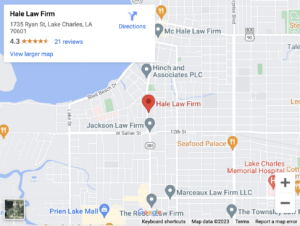Taylor Hale | January 30, 2024 | Brain Injuries
4 Types of Brain Injuries and 3 Levels of Severity

A traumatic brain injury (TBI) is an alarming medical event. They are one of the most severe types of injury a person can experience. However, TBI levels can range from a mild concussion to a lifelong coma. Learning more about brain injuries can help you know what to expect in the aftermath of a TBI diagnosis.
Understanding Traumatic Brain Injuries
If you or a loved one has been diagnosed with a TBI, one of your first questions is probably, “What does TBI mean?” TBI stands for “traumatic brain injury.” However, this term is so broad that it doesn’t tell you much.
To understand the implications of a traumatic brain injury diagnosis, it helps to understand that there are three basic TBI levels of severity. Identifying the severity level gives you a better idea of what kind of brain injury you’re dealing with. However, TBI levels aren’t the only way of understanding a TBI.
The brain is a complicated organ that can be injured in many ways. Looking at some of the most common types of brain injury can help you better understand what to expect in terms of treatment procedures, costs, and long-term consequences for both health and brain function.
The Three Levels of Traumatic Brain Injuries
Brain injuries can be categorized in a few different ways. Levels of severity are one of the most common and widely used ways of diagnosing traumatic brain injury categories. Based on severity, the three types of TBI are mild, moderate, and severe.
While medical professionals sometimes consider additional factors when identifying TBI severity, the primary consideration is how long the patient lost consciousness at the time of the injury.
Mild TBI
A TBI is typically identified as mild when it involves either no loss of consciousness or loss of consciousness lasting less than 30 minutes. “Concussion” is another commonly used term for a mild TBI. Mild TBIs are the least severe of the three possible levels. However, they’re still serious medical events.
In most cases, a full recovery is the expected outcome for a mild TBI. However, even this type of brain injury can produce lingering symptoms that significantly impact a person’s cognitive functioning.
Mild TBIs come with an unexpected risk. Because symptoms can be mild, this is the type of brain injury that most commonly goes undetected. Ignoring or failing to notice the symptoms of a concussion makes it more likely to go without medical treatment, which, in turn, can result in worsening symptoms and delayed recovery.
Moderate TBI
Moderate TBI is diagnosed when a person sustains a brain injury and loses consciousness for longer than 30 minutes but less than 24 hours. TBIs at the moderate level can range considerably in their impact. A moderate TBI can produce mild, short-term symptoms similar to a concussion or could result in serious, lasting consequences.
Severe TBI
Of the three types of TBI, a severe TBI is the most significant type of medical event. A severe TBI is usually diagnosed when an individual loses consciousness for more than 24 hours.
However, a TBI might also be diagnosed as severe if it’s evident that there is significant trauma to the brain, regardless of how long the patient remained unconscious. A severe TBI usually has a lasting impact on cognitive functioning. However, the exact form this impact takes can range substantially.
In some cases, a severe TBI might result in a coma that lasts for the remainder of the patient’s life. If consciousness is regained, it’s hard to predict the long-term impact on cognitive functions like memory, thinking skills, and speech.
Four Common Types of TBI
The TBI levels of severity are diagnosed based on factors like loss of consciousness and the impact on the patient’s brain function. However, severity isn’t the only way to identify a TBI. Brain injuries can take many forms.
Some of the most common brain injuries a patient can be diagnosed with include:
- Hematoma
- Contusion
- Hemorrhage
- Anoxic brain Injury
- Diffuse axonal brain injury
- Skull fracture
Traumatic brain injuries are often sorted into categories based on factors like physical injury and timeline. Two of the most significant TBI divisions are open versus closed injuries and primary versus secondary injuries.
Closed Brain Injury
Closed brain injuries occur when there isn’t a visible wound to the head. Car accidents and sports injuries are common sources of closed brain injuries. With a closed brain injury, there’s usually no visible sign of injury. However, the injured person may lose consciousness or show symptoms like confusion or lack of coordination.
Penetrating Brain Injury
A penetrating brain injury involves an object penetrating the skull. When a person experiences a penetrating brain injury, it’s easy to see they’ve suffered a serious head injury. Gunshot wounds and defective products are two common sources of penetrating brain injuries.
Primary Brain Injury
A primary brain injury occurs at the time of the accident. For example, a worker who sustains a brain injury during a construction accident might suffer a primary brain injury at the time of the accident. In a way, these injuries are more straightforward. The medical team can promptly diagnose the injury and get to work on the recommended course of treatment.
Secondary Brain Injury
Secondary brain injuries are one of the most complex types of TBI. A secondary brain injury occurs after the initial accident. Secondary brain injuries can take many forms. These usually happen because the initial injury leads to complications that result in a second form of injury.
Moving Forward After a Traumatic Brain Injury
The long-term outcome of a brain injury can be hard to predict. Understanding the types and levels of brain injuries is a good starting point for moving forward, but online research can only take you so far. You should always see a doctor immediately when you suspect a brain injury, even if it’s a mild one.
Brain injuries often come with substantial or lifelong treatment and care costs. If a TBI leaves you with no income and high medical bills, a personal injury lawyer can point you in the direction of how to recover the compensation you and your family need.
Contact our Lake Charles Brain Inury Attorneys At Hale Injury Lawyers For a Free Consultation
For more information, please contact an experienced brain injury attorney at Hale Injury Lawyers at (337) 888-4253 & schedule a free initial consultation today.
Hale Injury Lawyers
1735 Ryan St
Lake Charles, LA 70601
(337) 888-4253

